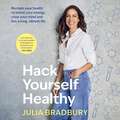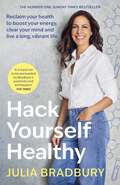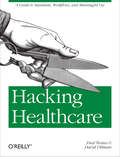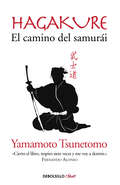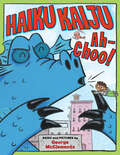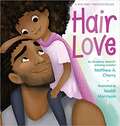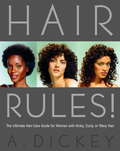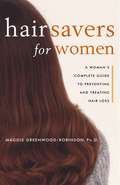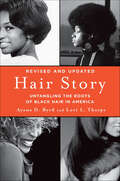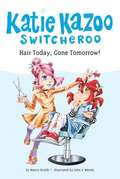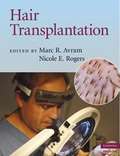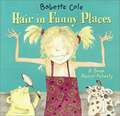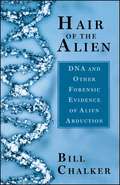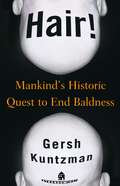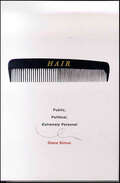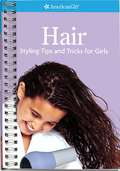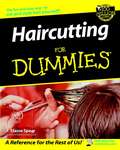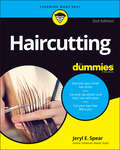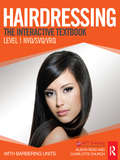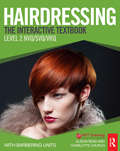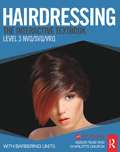- Table View
- List View
Hack Yourself Healthy: Reclaim your health to boost your energy, clear your mind and live a long, vibrant life
by Julia BradburyJoin Julia Bradbury as she travels the world to uncover the ultimate health and wellness hacks to help you take charge of your health for good.The human body is a marvel of biological engineering that constantly renews itself, and we always seem to be on the hunt for ways to improve it, physically and emotionally. But with so many new health trends on the rise, how do we know what really works?In Hack Yourself Healthy, TV presenter and author Julia Bradbury cuts through the noise to embark on a rigorous journey to reclaim her health following her own breast cancer diagnosis. Her quest in this book is to discover whether she can go from a cancer diagnosis to being the fittest and healthiest she's ever been. Travelling across the world to explore different cultural approaches, from India to Antarctica, from Cornwall to Yorkshire, Julia talks with world-renowned experts as she volunteers as a 'Crash Test Mummy' to test the latest in biohacking, screening and testing. Follow her as she embraces Europe's coldest cryotherapy chamber and investigates the world's oldest medical system, Ayurveda, in the Himalayas.Drawing from research, interviews with global thought leaders and personal experiments, Julia offers practical tips and accessible science-based strategies to optimise every aspect of your health and wellbeing. She uncovers why saunas can be so beneficial, how sugar affects us on a cellular level, what types of exercise we should be doing every week (and how much of it), if drinking alcohol has benefits, which foods can help us live a more vibrant life, and why planetary health and human health are so intrinsically linked.You'll also discover how to hack your nutrition and hormonal health, utilise sleep science and why the future of medicine is an integrative whole-person approach. As a long time 'outdoor evangelist' Julia continues to explore the rejuvenating power of nature (and even how it can mimic science). Using this ultimate health blueprint, you can join Julia on her quest to 'make the best of the rest' and curate your own transformative health journey at home and in nature.Hack Yourself Healthy will show you that true happiness isn't just about living longer - it's about living better.
Hack Yourself Healthy: Reclaim your health to boost your energy, clear your mind and live a long, vibrant life
by Julia BradburyJoin Julia Bradbury as she travels the world to uncover the ultimate health and wellness hacks to help you take charge of your health for good.The human body is a marvel of biological engineering that constantly renews itself, and we always seem to be on the hunt for ways to improve it, physically and emotionally. But with so many new health trends on the rise, how do we know what really works?In Hack Yourself Healthy, TV presenter and author Julia Bradbury cuts through the noise to embark on a rigorous journey to reclaim her health following her own breast cancer diagnosis. Her quest in this book is to discover whether she can go from a cancer diagnosis to being the fittest and healthiest she's ever been. Travelling across the world to explore different cultural approaches, from India to Antarctica, from Cornwall to Yorkshire, Julia talks with world-renowned experts as she volunteers as a 'Crash Test Mummy' to test the latest in biohacking, screening and testing. Follow her as she embraces Europe's coldest cryotherapy chamber and investigates the world's oldest medical system, Ayurveda, in the Himalayas.Drawing from research, interviews with global thought leaders and personal experiments, Julia offers practical tips and accessible science-based strategies to optimise every aspect of your health and wellbeing. She uncovers why saunas can be so beneficial, how sugar affects us on a cellular level, what types of exercise we should be doing every week (and how much of it), if drinking alcohol has benefits, which foods can help us live a more vibrant life, and why planetary health and human health are so intrinsically linked.You'll also discover how to hack your nutrition and hormonal health, utilise sleep science and why the future of medicine is an integrative whole-person approach. As a long time 'outdoor evangelist' Julia continues to explore the rejuvenating power of nature (and even how it can mimic science). Using this ultimate health blueprint, you can join Julia on her quest to 'make the best of the rest' and curate your own transformative health journey at home and in nature.Hack Yourself Healthy will show you that true happiness isn't just about living longer - it's about living better.
Hacking Healthcare: A Guide to Standards, Workflows, and Meaningful Use
by Fred Trotter David UhlmanReady to take your IT skills to the healthcare industry? This concise book provides a candid assessment of the US healthcare system as it ramps up its use of electronic health records (EHRs) and other forms of IT to comply with the government’s Meaningful Use requirements. It’s a tremendous opportunity for tens of thousands of IT professionals, but it’s also a huge challenge: the program requires a complete makeover of archaic records systems, workflows, and other practices now in place.This book points out how hospitals and doctors’ offices differ from other organizations that use IT, and explains what’s necessary to bridge the gap between clinicians and IT staff.Get an overview of EHRs and the differences among medical settingsLearn the variety of ways institutions deal with patients and medical staff, and how workflows varyDiscover healthcare’s dependence on paper records, and the problems involved in migrating them to digital documentsUnderstand how providers charge for care, and how they get paidExplore how patients can use EHRs to participate in their own careExamine healthcare’s most pressing problem—avoidable errors—and how EHRs can both help and exacerbate it
Haemorrhage and Thrombosis for the MRCOG and Beyond
by Ann HarperAlthough disorders of the coagulation system are uncommon in pregnancy, the two main hazards - haemorrhage and thromboembolism - are leading causes of direct maternal death in the UK and worldwide. Gynaecologists may encounter abnormal haemostasis as a cause of intractable menorrhagia or perioperative haemorrhage, and thromboembolism is a significant risk for women undergoing major gynaecological surgery. This book brings together various aspects of haemostasis in relation to obstetrics and gynaecology to provide practical guidance to clinicians, who may only occasionally encounter these problems. Emphasis is placed on the need for good working relationships and close liaison between obstetricians and gynaecologists, anaesthetists, haematologists and blood transfusion services. The book is primarily designed to provide a comprehensive summary for candidates preparing for the Part 2 MRCOG examination, and as such covers the RCOG curriculum for haemorrhage and thrombosis. It is also a valuable guide for all healthcare professionals working in the field.
Haféz: Teachings of the Philosopher of Love
by Haleh Pourafzal Roger MontgomeryAn exploration of the Persian poet’s spiritual philosophy, with original translations of his poetry • Features extensive insight into the meanings and contexts of the poetry and philosophies of this spiritual teacher• Includes over 30 complete poems by Haféz, including “The Wild Deer,” often regarded as his masterpieceFor 600 years the Persian poet Haféz has been read, recited, quoted, and loved by millions of people in his homeland and throughout the world. Like his predecessor Rumi, he is a spiritual guide in our search for life’s essence. Haféz is both a mystic philosopher and a heartfelt poet of desires and fears.Haféz: Teachings of the Philosopher of Love is the perfect introduction to the man known as the philosopher of love, whose message of spiritual transcendence through rapture and service to others is especially important to our troubled world. His wisdom speaks directly to the cutting edge of philosophy, psychology, social theory, and education and can serve as a bridge of understanding between the West and the Middle East, two cultures in desperate need of mutual empathy.
Hagakure. El camino del samurái
by Yamamoto TsunetomoUn clásico de la cultura japonesa que ayuda a la introspección y la concentración en nuestro mundo cada vez más frenético. Considerado como una de las fuentes de inspiración de Fernando Alonso, el piloto lo cita frecuentemente en sus intervenciones públicas y redes sociales. «Cuando las cosas se hacen despacio,salen mal siete veces de cada diez.El guerrero hace las cosas deprisa.» Hagakure significa «a la sombra de las hojas» y es una obra literaria japonesa escrita por Yamamoto Tsunetomo en el siglo XVIII. Su intención era transmitir a las generaciones venideras las reglas del bushido, es decir, el código guerrero de los samuráis. Se trata de un breviario, un compendio de anécdotas y reflexiones de temática variada y sin un orden preestablecido, hecho con la intención de transmitir introspección y conocimiento filosófico al tiempo que promueve el espíritu del bushido. El texto solo iba dirigido a los guerreros y se mantuvo en secreto durante muchos años. Posteriormente llegó a convertirse en un clásico de la cultura japonesa. Con una esencia que se contrapone al materialismo imperante en nuestra sociedad, este texto ha alcanzado gran notoriedad en nuestros días y ha llegado a convertirse en libro de cabecera de personajes tan admirados como Fernando Alonso, que ha llegado a tatuarse un samurái en su espalda. «¿Yo, en una palabra?», respondía recientemente en una entrevista: «Guerrero. [El samurái] es una manera de recordarme quién soy, de dónde vengo y la fuerza que tengo que tener cada día.» Fernando Alonso ha dicho...«Cierro el libro, respiro 7 veces y me voy a dormir.»
Haiku Kaiju Ah-Choo!
by George McClementsA clever boy comes to the rescue when a sick Kaiju needs help explaining that he feels unwell in this comics-style picture book--perfect for future fans of Dog Man and The Bad Guys.A giant kaiju (think Godzilla!) awakes one morning not feeling well. He is confused and needs help. Off to the city where his size makes him seem dangerous. Meanwhile, over at Kaiju Central (they keep watch for kaiju activity 24/7), a dad and his son arrive to find the KAIJU alarm sounding for the first time ever! A kaiju has been spotted! Now what? Written in extra-relatable haiku and full of classic monster movies tropes, this bighearted comic tale will rev up story time with its satisfying blend of poetry, kindness, adventure, and humor.
Hair Love
by Matthew A. Cherry"I love that Hair Love is highlighting the relationship between a Black father and daughter. Matthew leads the ranks of new creatives who are telling unique stories of the Black experience. We need this." - Jordan Peele, Actor & Filmmaker It's up to Daddy to give his daughter an extra-special hair style in this ode to self-confidence and the love between fathers and daughters, from Academy-Award winning director and former NFL wide receiver Matthew A. Cherry and New York Times bestselling illustrator Vashti Harrison. Zuri's hair has a mind of its own. It kinks, coils, and curls every which way. Zuri knows it's beautiful. When Daddy steps in to style it for an extra special occasion, he has a lot to learn. But he LOVES his Zuri, and he'll do anything to make her -- and her hair -- happy. Tender and empowering, Hair Love is an ode to loving your natural hair -- and a celebration of daddies and daughters everywhere. A perfect gift for special occasions including Father’s Day, birthdays, baby showers, and more!
Hair Rules!
by Anthony DickeyKinky, curly, or wavy hair isn't "problem" hair--it's just hair with a different set of rules!For too long, hairstylists and hair-care companies have ignored the needs of women with kinky, curly, or wavy hair, focusing on it as "problem" hair rather than celebrating its unique texture. But now hair-care and style expert A. Dickey, considered by top magazine beauty editors to be the foremost authority on caring for, cutting, and styling curly hair, has written Hair Rules! to end the frustration faced by women with curly hair every day. Hair Rules! is chock-full of simple tips for all types of curly hair and covers everything from the best shampoos and conditioners to use, to damage-free hair-drying (dust off that hood dryer!), the use of natural oils, and the safest coloring, styling, and chemical relaxing techniques--as well as guidelines for maintaining healthy, gorgeous hair. "My mission," writes Dickey, "is simple: to advise and encourage all women with nonstraight hair to strive to attain their beauty, whatever their ethnicity, and whatever their tastes." From the Trade Paperback edition.
Hair Savers for Women: A Complete Guide to Preventing and Treating Hair Loss
by Margaret Greenwood-RobinsonToday in America, there are 20 million women suffering from hair loss -- a devastating problem that most certainly and often unnecessarily affects a woman's self-image. Whether the loss is due to stress, hormonal imbalance, illness, chemotherapy, or medical side effects, hair loss can be prevented.Hair Savers for Women: A Complete Guide to Preventing and Treating Hair Loss is the first and only book to address this important cosmetic health issue. It covers the very latest solutions and advances in treating female hair loss, from medicine to natural remedies, and introduces women to a whole new world of safe, clinically proven baldness remedies. For women whose hair loss persists, the book discusses surgical alternatives such as hair transplants and scalp reductions, as well as the pros and cons of hair weaves and wigs.From the Trade Paperback edition.
Hair Story: Untangling the Roots of Black Hair in America
by Lori L. Tharps Ayana D. Byrd“As far as neatly and efficiently chronicling African Americans and the importance of their hair, Hair Story gets to the root of things.” —Philadelphiaweekly.comHair Story is a historical and anecdotal exploration of Black Americans’ tangled hair roots. A chronological look at the culture and politics behind the ever-changing state of Black hair from fifteenth-century Africa to the present-day United States, it ties the personal to the political and the popular.Read about:Why Black American slaves used items like axle grease and eel skin to straighten their hair.How a Mexican chemist straightened Black hair using his formula for turning sheep’s wool into a minklike fur.How the Afro evolved from militant style to mainstream fashion trend.What prompted the creation of the Jheri curl and the popular style’s fall from grace.The story behind Bo Derek’s controversial cornrows and the range of reactions they garnered.Major figures in the history of Black hair are presented, from early hair-care entrepreneurs Annie Turnbo Malone and Madam C. J. Walker to unintended hair heroes like Angela Davis and Bob Marley. Celebrities, stylists, and cultural critics weigh in on the burgeoning sociopolitical issues surrounding Black hair, from the historically loaded terms “good” and “bad” hair, to Black hair in the workplace, to mainstream society’s misrepresentation and misunderstanding of kinky locks.Hair Story is the book that Black Americans can use as a benchmark for tracing a unique aspect of their history, and it’s a book that people of all races will celebrate as the reference guide for understanding Black hair.“A comprehensive and colorful look at a very touchy subject.” —Essence
Hair Today, Gone Tomorrow! (Katie Kazoo Switcheroo #34)
by Nancy KrulikCan one little wish mess up the life of a nice, ordinary kid? Sure can! Nancy Krulik's funny, popular series begins on a day when nothing goes right for Katie Carew, the kind of day when you wish you could--poof! like magic--be anybody but yourself. Poor Katie soon learns that's when the real trouble starts! Katie is nervous about her upcoming clarinet performance, but Suzanne convinces her that a new haircut is just the thing she needs to wow the audience. And the only place for both girls to go is Cherrydale's newest, most stylish salon. Disaster strikes, however, when Katie is switcherooed into Suzanne's stylist right before her cut. Talk about a hairy situation!
Hair Transplantation
by Marc R. Avram Nicole E. RogersHair Transplantation in Cosmetic Dermatology is a fully illustrated reference book that provides a state-of-the-art overview to all aspects of hair transplantation. Using a combination of written text, color photographs, and tables, eleven leading physicians and practitioners in the field discuss the latest surgical procedures to restore a natural-looking frame of hair to the face. This volume is an indispensable reference for dermatologists, practitioners, and residents, providing an extensive coverage of the latest procedures and instruments in hair restoration surgery, techniques for follicular unit extraction, Cicatricial alopecia, and eyelash transplantation.
Hair in Funny Places: A Book About Puberty
by Babette ColeWhen a little girl asks her teddy bear about growing up, she gets the whole answer. The true story about growing up is all about Mr. and Mrs. Hormone and the changes they make in everyone's body. Told with lighthearted frankness, this hilarious picture book takes the mystery out of puberty, and the fear out of an often embarrassing subject. Ages 7 and up.
Hair of the Alien: DNA and Other Forensic Evidence of Alien Abductions
by Bill ChalkerThe shocking true story of a case unlike any other in the annals of UFO investigation, DNA research, or alien abduction.July 23, 1992: In Sydney Australia, twenty-eight-year-old Peter Khoury was awoken by what appeared to be two females—both striking and unearthly—kneeling on his bed. What transpired between them was a physical assault as bizarre and disorienting as it was unnatural. Then, as quickly as they had arrived, they vanished. Khoury had become one of a legion of alien abductees with inexplicable experiences, but this particular incident stood apart from all the others. This time, there was evidence—two strands of white-blond hair from one of the females. Khoury&’s case would result in the very first forensic DNA analysis of &“alien abduction&” evidence and revealed an extraordinary biological anomaly—one genetically close to human yet almost impossibly far from the human mainstream. A gripping account of one of the great mysteries of our time, Hair of the Alien, brings us closer than ever before to understanding our past, our origings, and our place in the universe.
Hair!: Mankind's Historic Quest to End Baldness
by Gersh KuntzmanHair! Mankind's Historic Quest to End Baldness is a social history of one of humanity's most irksome problems: male pattern baldness. Throughout the centuries, Man (not his real name) has tried everything to hide, treat and repair baldness, as well as a host of nostrums designed to coax hair growth from the scalp (or, at least, money from the wallets of unsuspecting baldies). Yet we stand on the brink of a truly historic epoch: Two drugs are now federally approved remedies for baldness and more are on the way while surgical techniques continue to improve, and even hairpieces are becoming acceptable again. Will baldness, the stigma it carries, and the profound psychological toll it takes on men soon be things of the past? Will bald men someday be electable? Are these even rhetorical questions? Gersh Kuntzman takes you from the laboratories of Merck, maker of Propecia, to the operating rooms of the nation's best hair-transplant surgeons, to the rug men working on the cutting edge of artificial hair design. Hair! covers baldness like nothing before.
Hair: Public, Political, Extremely Personal
by Diane SimonCut it, color it, perm it, shave it, braid it, wax it, highlight it, mousse it, gel it, brush it and brush it and brush it...What don't we do to our hair? Diane Simon is fascinated by people's relationship with their hair because it is both very personal one and very public. She recognizes that so much of who we are is reflected in our relationship with our hair. Diane is the curly-haired daughter of straight haired parents and has suffered much for her "bad hair". In researching and writing Hair: Public, Political, ExtremelyPersonal she has used her suffering as a point of entry, a common ground to share with those who think of themselves as excluded from Western beauty norms because of their hair. In Hair: Public, Political, ExtremelyPersonal, social and cultural issues form the backdrop for an exploration of the choices people make to transform themselves through their hair. Hair is a cultural investigation with a strong narrative momentum and a commitment to individual personalities. Join Diane on her visits to Harlem braiding salons and Hassidic wig shops, and in her quest to try every type of hair removal. Spend an afternoon with Sy Sperling at the Hair Club for Men headquarters in Boca Raton, Florida, and find out the truth about some celebrity scalps. Hair: Public, Political, ExtremelyPersonal is candid, humorous, serious, and surprisingly revealing.Cut It, Curl It, Weave It, Bleach It, Condition It, Implant It, Blowdry It, Spray It, Tint It, Comb It, Rat It, Bob It, Perm It, Braid It, Coif It, Gel It, Wig It, Fake It, Knot It, Pull It, Dye It, Highlight It, Wave It, Shampoo It, Straighten It, Pluck It, Color It, Wax It, Clip It, Shave It, Thread It, Mousse It, Depilitorize It, Tweeze It, Hide It, Laser It, Tease It, Trim It, Chop It, Wash It, Dry It, Brush It And Brush It And Brush It And Brush It And Brush It And Brush It And Brush It And Brush It And Brush It And Brush It And Brush It And Brush It And Brush It And Brush It And Brush It And Brush It And Brush It And Brush It And Brush It And Brush It And Brush It And Brush It
Hair: Styling Tips and Tricks for Girls (American Girl)
by Jim JordanFull of the same straightforward advice that made "The Care and Keeping of You" so popular, this how-to guide offers stylists' tricks on making perfect braids, knots, and ponytails, plus tips on taming flyaways, getting barrettes to stay put, and more.
Haircutting For Dummies
by J. Elaine SpearWant to cut hair but think you don't have the talent? If you've ever dreamed of becoming a painter, a sculptor, or a home decorator, you can cut hair. If you love sewing, drawing, or craft projects, you can cut hair. This book is designed to help you discover your inner artist, easily enhancing your loved one's hairstyles while trimming big bucks off your family budget. Haircutting For Dummies is for people who want to cut their family and friends' hair, as well as those who are entering the field of cosmetology. Cutting hair at home will allow you to save money, be creative, and do something nice for your loved ones. If you're looking to become a licensed stylist, this book will show you how to do simple trims and styles while giving your own creativity room to roam. You'll see how to: Prepare men's and women's hair for cutting Create short, mid-length, and long styles Choose and care for your cutting tools Apply advanced haircutting techniques Seek a career in cutting hair In this easy-to-follow guide, you'll find step-by-step instructions for the latest short, medium, and long hairstyles as well as more involved techniques such as notching and texturing. You get plenty of expert advice in using your tools, following lengths and angles, and creating show-stopping styles, as well as proven guidance in how to: Cut and style straight, curly, or kinky hair Give the perfect shampoo Judge the texture, strength, and health of hair Handle bangs, layers, and sliced hair Use a blow dryer, curling iron, and flat iron Pump up the volume and fight the frizzies Win your family's and friends' haircutting trust Featuring detailed illustrations and model shots, tips on maintaining your own haircut between salon appointments, and special advice on cutting children's hair, Haircutting For Dummies will have you achieving salon- or barbershop-quality results on all types of hair!
Haircutting For Dummies
by Jeryl E. SpearYour short cut to stylish home hairdressing Ever wondered if you could hack it at cutting your friends' and family's hair, or could even make it as a full-blown stylist? If you've got a little creative spark—a love of crafting or painting or a talent for home makeovers—and an obsessive yen to redo the dos you see around you, it's more than likely you can make the cut. The new edition of Haircutting For Dummies shows you how to draw out your inner artist and bring your ideas to glorious life on the heads of your nearest and dearest—and will help shave dollars off your beauty budget into the bargain! In a free-spirited, chatty style, master stylist and social media corporate beauty consultant Jeryl E. Spear sits you down for a comprehensive snip-and-tell overview of how to reproduce the latest short, medium, and long hairstyles, as well as fancying things up with cutting-edge techniques like slicing, notching, and layering. Jeryl also provides a drawerful of tips on the tools you'll need to get started. Get a grip on men's and women's styles Set up shop at home Choose your tools and keep them sharp Take the first steps to embracing a beauty career Packed with detailed illustrations and model shots to guide your work, this book has everything you need to begin the creative work of making everyone you know—and the world—a smarter, more beautiful place!
Hairdressing: The Interactive Textbook, Level 1
by Charlotte Church Alison ReadFor Level 1 Hairdressing students on NVQ, SVQ and VRQ courses. A genuinely new and innovative way for students to study hairdressing, this new textbook is supported with extensive multimedia material and activities at no extra cost. Some books include a few videos and basic materials, but this title comes with over 100 free online resources and activity screens with which to improve learning. Online questions are also included as well as links to other resources such as images, animations and videos. The elearning resources are included in every chapter to complement the textbook content and will help students from the start of their qualification until they pass their final exams.
Hairdressing: The Interactive Textbook, Level 2
by Charlotte Church Alison ReadFor Level 2 Hairdressing students on NVQ, SVQ and VRQ courses A genuinely new and innovative way for students to study hairdressing, this new textbook is supported with extensive multimedia material and activities at no extra cost. Some books include a few videos and basic materials, but this book comes with over 250 free activities to improve learning. Online multimedia and multiple-choice questions for on-going assessment are also included as well as links to other resources such as images and videos. The elearning resources are included in every chapter and complement the textbook content and will help students from the start of their qualification until they pass.
Hairdressing: The Interactive Textbook, Level 3
by Charlotte Church Alison ReadFor Level 3 Hairdressing students on NVQ, SVQ and VRQ courses.A genuinely new and innovative way for students to study hairdressing, this new textbook is supported with extensive multimedia material and activities at no extra cost. Some books include a few videos and basic materials, but this title comes with over 150 free online resources and activity screens with which to improve learning. Online questions are also included as well as links to other resources such as images, animations and videos. The elearning resources are included in every chapter to complement the textbook content and will help students from the start of their qualification until they pass their final exams.
Hairs / Pelitos
by Sandra CisnerosIn English and Spanish, a child describes how each person in the family has hair that looks and acts different, Papa's like a broom, Kiki's like fur, and Mama's with the smell of warm bread.
Hairstyled
by Anne ThoumieuxSpruce up any outfit with your best accessory--your hair!You don't need to be a professional to get show-stopping hair. Hairstyled presents 75 deceptively simple techniques for creating your favorite high-fashion hairstyles. Dress up your everyday look with a ballerina bun or accessorize with a scarf bow. Turn heads at special occasions with the woven crown braid or a regal bouffant. Each style has how-to photographs that are easy to follow, and chapters dedicated to a variety of hair lengths and textures help you update your look whether you have a pixie cut or long, curly tresses. With product tips and countless ideas for accessorizing your 'do and inventive variations on classic styles, Hairstyled is your guide to getting gorgeous hair every day.
